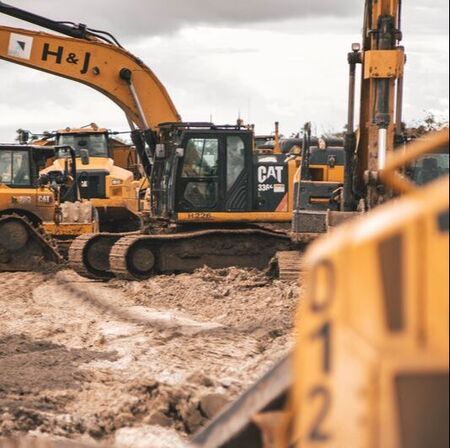|
Equipment is all around us. It’s used to pave the roadways we drive on, assemble the cars we drive in, and manufacture the phones we so desperately can’t live without. Equipment can be extremely helpful in our daily jobs, but also extremely dangerous if not utilized correctly. So what does OSHA say about construction equipment? Standard 1926.20(b)(4) states “The employer shall permit only those employees qualified by training or experience to operate equipment and machinery.” What type of training do you need? What qualifies as experience? We will explore these questions for the many different types of equipment you will find on a jobsite.
Construction Equipment Excavators, bull dozers, graders, milling machines, skid steers, loaders, and other outdoor equipment are required to follow the basic OSHA standard as mentioned above. Qualified means one who, by possession of a recognized degree, certificate, or professional standing, or who by extensive knowledge, training, and experience, has successfully demonstrated his ability to solve or resolve problems relating to the subject matter, the work, or the project. The Association of Equipment Manufacturers states to be qualified, you must understand the written instructions supplied by the manufacturer, have training including actual operation of the equipment, and know the safety rules and regulations for the jobsite. So what do they all have in common? Three basic principles:
Forklifts / Powered Industrial Trucks Do forklifts fall in the same category as construction equipment? The short answer is No. Forklifts have their own OSHA standard and are one of the few types of equipment that have additional regulations associated with using a powered industrial vehicle. Powered Industrial Trucks (forklifts) require specified training depending on the classification of the forklift, which is in close relation with the type of fuel source the forklift utilizes to power the engine. It is important to understand the differences between passenger vehicles and forklifts as the center of gravity, stability, and weight vary greatly. Forklifts require operators to be certified to run the equipment and the certification must be renewed every 3 years. The specific requirements can be found in OSHA standard 1910.178(I). Aerial Lifts / Scissor Lifts / Mobile Elevated Work Platforms Traditionally Aerial Lifts and Scissor Lifts were found under the mobile scaffold standard, but this has begun to change with new industry best practices and associations implemented in 2021. The American National Standards Institute (ANSI) released a new standard, A92, which recategorizes lifts into 2 Groups and 3 types. It also mandates newer safety features from manufacturers to assist in safe operation of the lifts and avoid tip overs while working from heights. With these changes, the goal is to align more closely to a globally recognized standard, yet requires retraining for all employees that use any type of lift on a jobsite. Since these standards were applied by ANSI and OSHA references ANSI in standard 1926.453, it by reference becomes an OSHA standard required under law. Very similar to forklifts, the Mobile Elevated Work Platform standard requires classroom and operation to be considered qualified to operate the MEWP equipment. There are various other types of equipment found on jobsites or in manufacturing facilities, yet all of them require safety training prior to use. Make sure you know and understand the operation manual and perform a visual or written inspection prior to operating each shift. Don’t forget a refresher will be required every few years to confirm safe operation and review any new safety features available or in operation. To keep the conversation going, download the Aerial Lift Toolbox Talk (TBT) below or comment below.
1 Comment
|
AuthorSTAC Admin Categories
All
Archives
July 2024
|


 RSS Feed
RSS Feed